The Evolution of Deer Management in Mississippi
11/9/2023 10:00:00 AM
From MDWFP- Updated
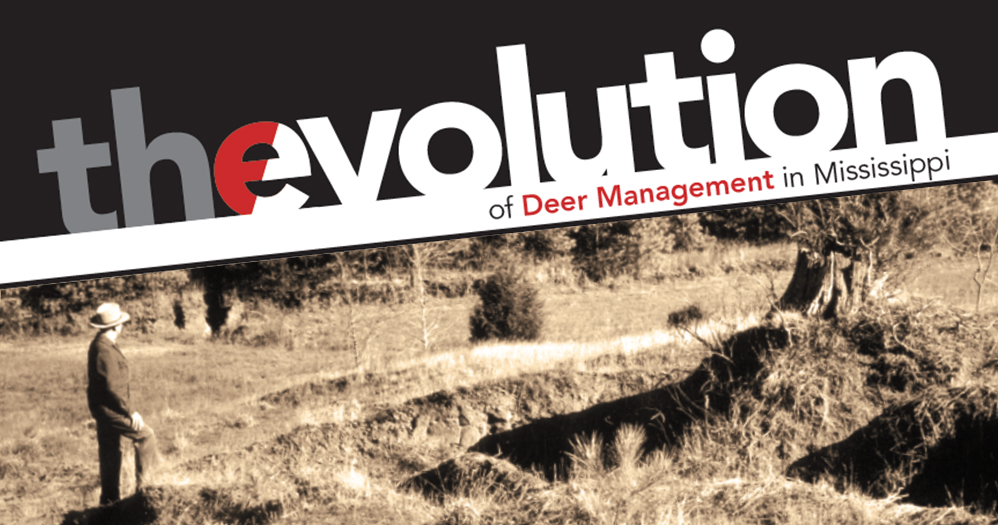
Mississippi established its first official deer season in 1905, and five years later, it set a bag limit of five deer. Fewer than 20 years later, the state’s deer herd had depleted to around 1,200.
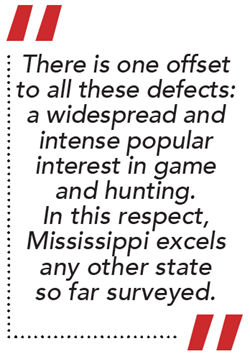 It was around then—in 1929—when Aldo Leopold, considered the father of conservation, conducted a tour of Mississippi. He found no game agency and only the beginnings of a conservation movement, but he stated, “There is one offset to all these defects: a widespread and intense popular interest in game and hunting. In this respect, Mississippi excels any other state so far surveyed.” Partly as a result of Leopold’s findings, the state created in 1932 the Mississippi Game and Fish Commission, now known as Mississippi Department of Wildlife, Fisheries, and Parks (MDWFP). Along with that creation came the beginning of a decades-long deer management program that has helped Mississippi attain one of the largest and most intensively managed white-tailed deer herds in the country.
It was around then—in 1929—when Aldo Leopold, considered the father of conservation, conducted a tour of Mississippi. He found no game agency and only the beginnings of a conservation movement, but he stated, “There is one offset to all these defects: a widespread and intense popular interest in game and hunting. In this respect, Mississippi excels any other state so far surveyed.” Partly as a result of Leopold’s findings, the state created in 1932 the Mississippi Game and Fish Commission, now known as Mississippi Department of Wildlife, Fisheries, and Parks (MDWFP). Along with that creation came the beginning of a decades-long deer management program that has helped Mississippi attain one of the largest and most intensively managed white-tailed deer herds in the country.
One of the first tasks the Game and Fish Commission undertook was the creation of refuges, such as the Leaf River Refuge in south Mississippi. Deer mostly from the small existing herds along the Mississippi, Noxubee, and Pascagoula rivers stocked these refuges. As herds grew inside the refuges, deer were trapped there and released in other counties where deer had been absent for decades. Most counties began their “new” herds with fewer than 20 deer. These first releases occurred in the 1930s and continued until the 1970s.
As food resources were high and predators almost nonexistent, deer herds grew exponentially. Soon after, more counties were conducting short, buck-only deer hunting seasons. The deer hunting seasons typically lasted less than a week and harvest was low.
With no female harvest, deer herds increased in number so rapidly that by the 1970s localized overpopulation problems existed in some counties. As hunters were in a “protection phase” after restocking, the public perception was slow to change as deer herds increased.
Sentiment was against the harvesting of a female deer. At this point, some areas needed some doe harvest, while the more recently restocked areas still needed to be in the protection phase.
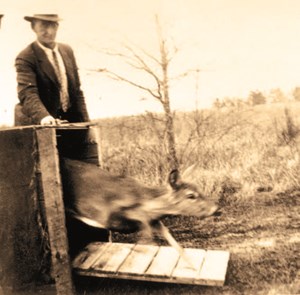
Photo: A member of the Mississippi Game and Fish Commission releases a deer into a refuge as part of the restocking program initiated in the 1930s.
It was realized that a blanket, statewide regulation could not fix this problem, nor even could county-wide regulations, as portions of counties were overpopulated with deer while other portions had very few or none. To counter this problem, in 1978 Mississippi State University, in conjunction with the Mississippi Game and Fish Commission, created a program to assist individual properties in combating overpopulated deer herds.
After some minor modifications, the program became the Deer Management Assistance Program (DMAP). DMAP provided a means to manage localized deer herds and created a one-on-one relationship between deer managers/hunters and a wildlife biologist.
Site-specific recommendations based on data from each local herd were provided annually. DMAP is still active and has changed little from its original form. Now, biologists in Mississippi provide site-specific deer management recommendations for more than 1.7 million acres of deer habitat.
However, even with DMAP, the anti-doe harvest sentiment was strong. Biologists recommending localized doe harvests were met with strong opposition. Because of public sentiment and the lack of deer management research, the Commission was slow in enacting antlerless seasons.
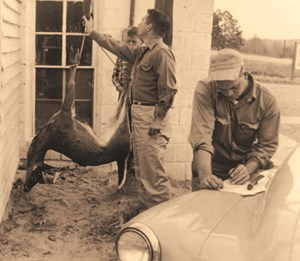
Photo: A buck is prepared for cleaning and documentation.
The first antlerless harvest opportunity began statewide during the 1959 archery season. The first firearm opportunity to harvest antlerless deer was in Coahoma County, west of the levee, in 1966. During the 1982 deer season, a one- or two-day antlerless season was opened for fire-arms hunters statewide. This later was increased statewide to two days, then to one week, and later to two weeks.
Also, in the 1989-1990 season, private landowners and leaseholders in Carroll and Montgomery counties were offered the opportunity to purchase permits to harvest antlerless deer during the entire gun season. This project was called the Fee-Based Management Assistance Program (FMAP).
Three years later, this program was offered statewide. Archery and muzzleloader hunters were allowed to take an antlerless deer, but the number of hunters using this equipment was low, and thus, so was an antlerless harvest. In the meantime, the herd continued to expand.
Collisions between deer and vehicles occurred more frequently. Deer caused extensive damage to crops and gardens. Slowly, more hunters began to realize that some female deer harvest was needed.
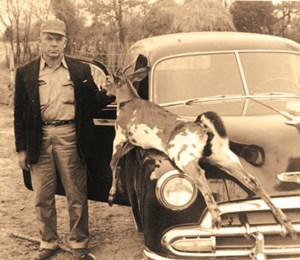
Photo: A member of the Mississippi Game and Fish Commission with a piebald white-tailed deer.
In 1995, Mississippi opened the antlerless season across most of the state for the entire deer season. Seasons had continually expanded over the past decade and now were 3½ months long, a far cry from the five-day seasons many older hunters can remember.
Doe harvest immediately began to increase and exceeded buck harvest throughout the state. This trend continues today. The majority of hunters throughout the state now understand the need for harvesting does to control deer herd numbers.
Significant changes in buck harvest throughout Mississippi coincided with a shift in attitudes toward antlerless harvest. When deer seasons began, deer densities were low. Few deer were seen, and thus any legal buck was a trophy. As deer populations expanded and hunters began seeing more deer, the desire to harvest a larger-antlered buck began to emerge. Many managers began to enact antler restrictions on their properties.
In 1995, coinciding with the increased antlerless opportunity, the Mississippi Legislature created the four-point law. For the next 13 years, a legal buck was defined as having four antler points.
For decades, Mississippi State University has been a leader in white-tailed deer management research. One research project revealed that this law was high grading the yearling buck population, and was thus reducing the overall antler size of mature bucks in many regions of Mississippi.
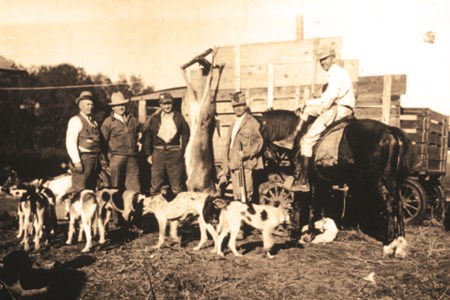
Photo: A group of hunters poses with their harvest.
With this new research, the Mississippi Legislature granted the Mississippi Commission on Wildlife, Fisheries, and Parks permission to enact the current spread and main beam criteria as a definition of a legal buck. DMAP data revealed differences in overall size of deer as it related to the soil regions in Mississippi.
Thus, the state was divided into zones, with the most highly fertile soil requiring a buck to meet either a 12-inch inside spread or a 15-inch main beam minimum to be eligible for harvest. The rest of the state requires a buck to meet either a 10-inch inside spread or a 13-inch main beam minimum to be legal.
The goal of this law was to protect all 18-month-old bucks. Many managers, and especially the majority of DMAP properties, use criteria above the state minimum as they attempt to target bucks that are 3½-plus years old. In addition, many of these managers are implementing management buck criteria to remove bucks that are of poorer antler quality.
The newest change in mindset shows many hunters attempting to age bucks on the hoof, based on body characteristics. The goal of these hunters is to protect mature bucks, regardless of antler size, and subsequently allow the best quality bucks to reach their full potential. Many managers have taken this approach over the past several years, and trail cameras have increased the effectiveness of this buck harvest strategy.
 The combination of antler criteria and age criteria are showing results, as many clubs are now reaching their buck management goals. DMAP data shows the percentage of mature bucks (4½-plus years old) in the harvest currently is 49 percent, compared to only 4 percent in the 1992 harvest. Mississippi hunters are now managing for and harvesting more older bucks than any time in history.
The combination of antler criteria and age criteria are showing results, as many clubs are now reaching their buck management goals. DMAP data shows the percentage of mature bucks (4½-plus years old) in the harvest currently is 49 percent, compared to only 4 percent in the 1992 harvest. Mississippi hunters are now managing for and harvesting more older bucks than any time in history.
Obviously, antler size will coincide with age, so Mississippi hunters are now taking some of the biggest deer in the recorded history of the state. Antlers continue to reign supreme as the primary motivation for many deer hunters. Deer are the most pursued of all game animals in Mississippi, with 93 percent of hunters surveyed revealing that they hunt Mississippi’s state mammal.
As interest in deer hunting is high, so are the interests in the tools of the trade. Food-plot management is now a separate industry, with custom seed blends sold and thousands of acres planted across the state primarily for deer management. In addition, many other products like weapons, ammunition, calls, scents, clothing, and vehicles are marketed to deer hunters. Many habitat-management practices are implemented primarily for deer, which also benefit other game and non-game species. Television shows film actual hunts and promotes interest in hunting year-round. Numerous meat-processing facilities have opened to process the deer that hunters harvest.
Hundreds of thousands of acres of land are leased to deer hunters for hunting rights. Data from 2009 shows hunting to be a $1.1 billion industry in Mississippi, with deer hunting contributing the bulk of this at $880 million.
As of 2023, Mississippi’s deer herd is now estimated at greater than 1.5 million animals, which is a long way from the 1,200 less than a century ago.
Many other factors and strategies are currently impacting deer management in Mississippi. We strive to control the herd and lessen its negative impacts, as these impacts will increase as the herd and human populations expand.
Now Mississippi’s deer herd faces another threat as Chronic Wasting Disease continues to spread in Mississippi and has now been detected in 10 counties. The results of these samples will lead to more changes as MDWFP understands that a long-term persistent battle against this disease is necessary. A new normal is coming.
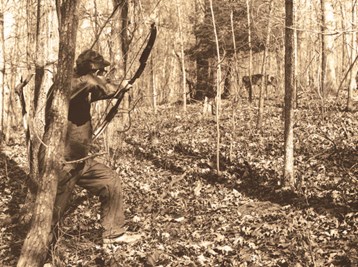
Photo: A bowhunter takes aim with a buck in the distance.
White-tailed deer, their management, and pursuit will continue to change. While these changes have and will continue to occur, one passion has stayed the same. It is the inner hunger in man to hunt and to ensure the future of what he hunts. Mississippi hunters have proven that they care for wildlife resources.
Through your hunting license purchases, MDWFP will continue to conserve and enhance Mississippi’s wildlife, fisheries, and parks, provide quality outdoor recreation, and engage the public in natural resource conservation.
William T. McKinley is the Deer Program Coordinator for MDWFP. Stan Priest is the Lands Coordinator for MDWFP. Lann M. Wilf, formerly with MDWFP and now the Animal Control Officer for Columbus Air Force Base, contributed to this report.









